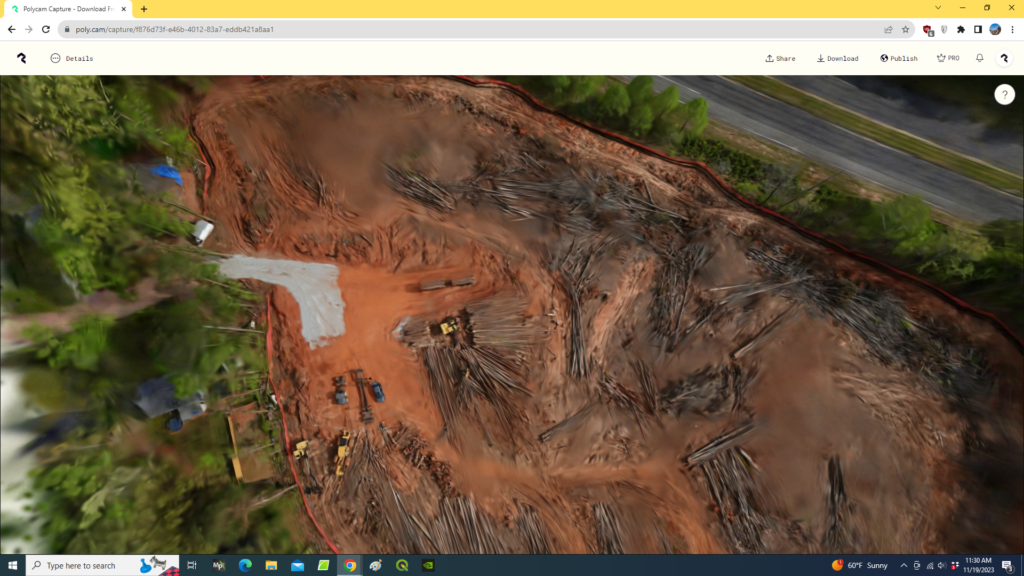In the field of photogrammetry, the market for 3D imagery is quite small. This may be because of the difficulty in creating 3D images of useful quality and fidelity.
New 3D rendering technologies may increase the opportunities for imagery captured by sUAS and other means. Examples are Neural Radiance Fields (NeRF’s, and Gaussian Splats. The following is a 3D rendering made using 281 images and processed by Poly Cam’s Gaussian Splat rendering service. Click on the image to navigate the model.
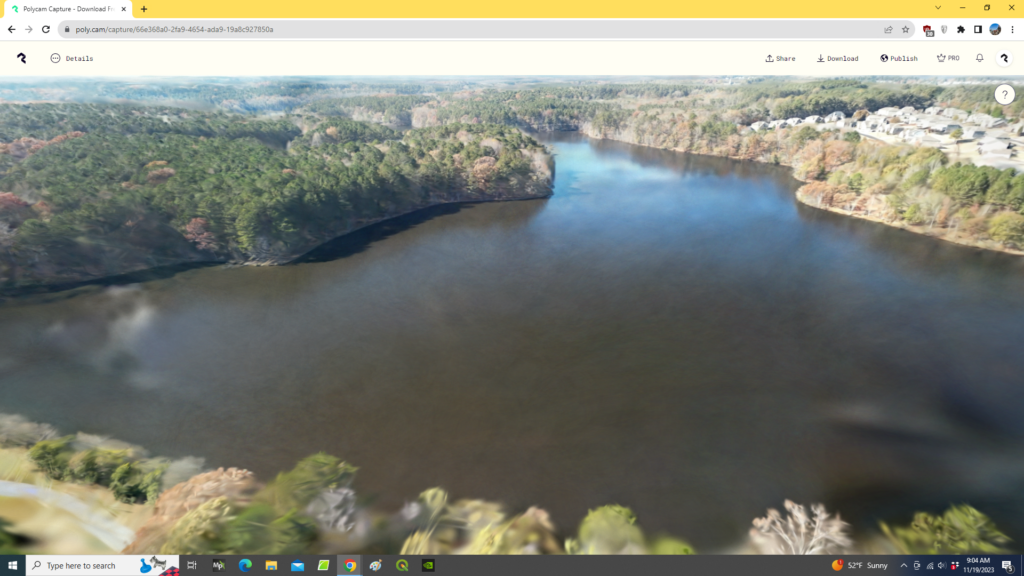
This model was built using 281 images taken at 80 meter elevation. They are 48 MP images taken with a 24 mm (35mm equivalent) lens. The photos were taken at a 25 degree oblique angle in a crisscross grid pattern. It took Poly Cam 45 minutes to produce this model.
The following examples are gaussian splats made from 12 MP images at different elevations and angles.
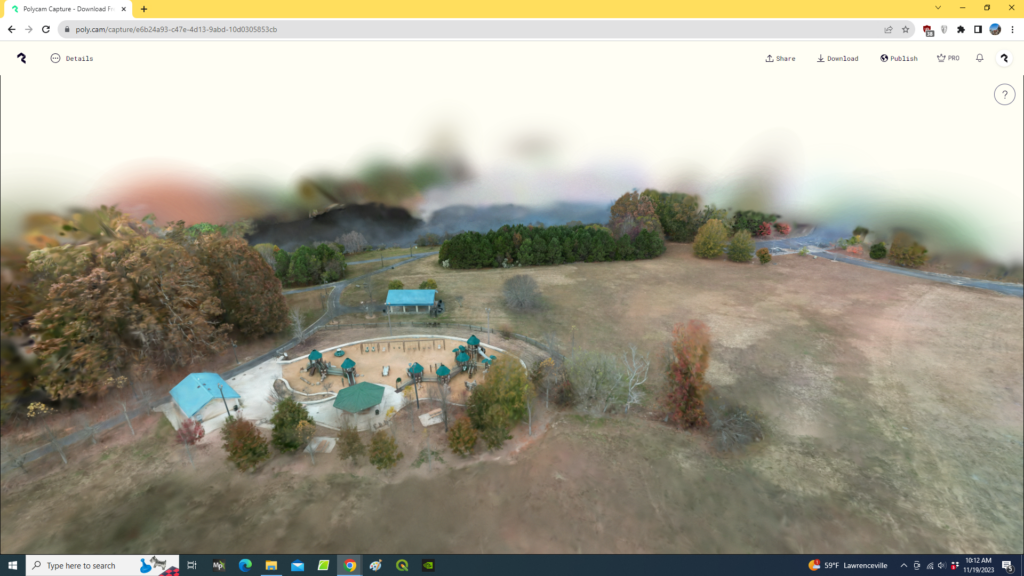
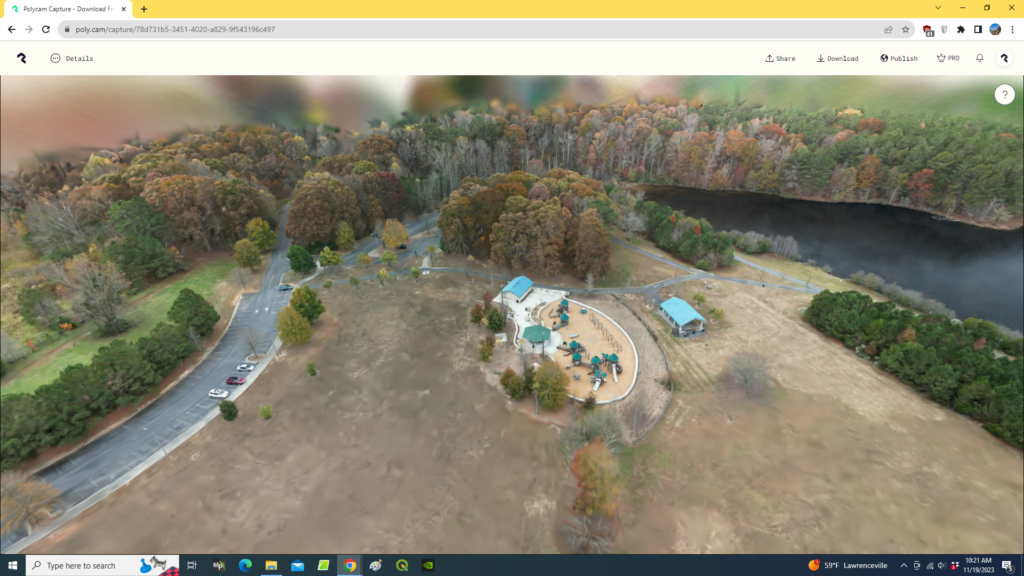
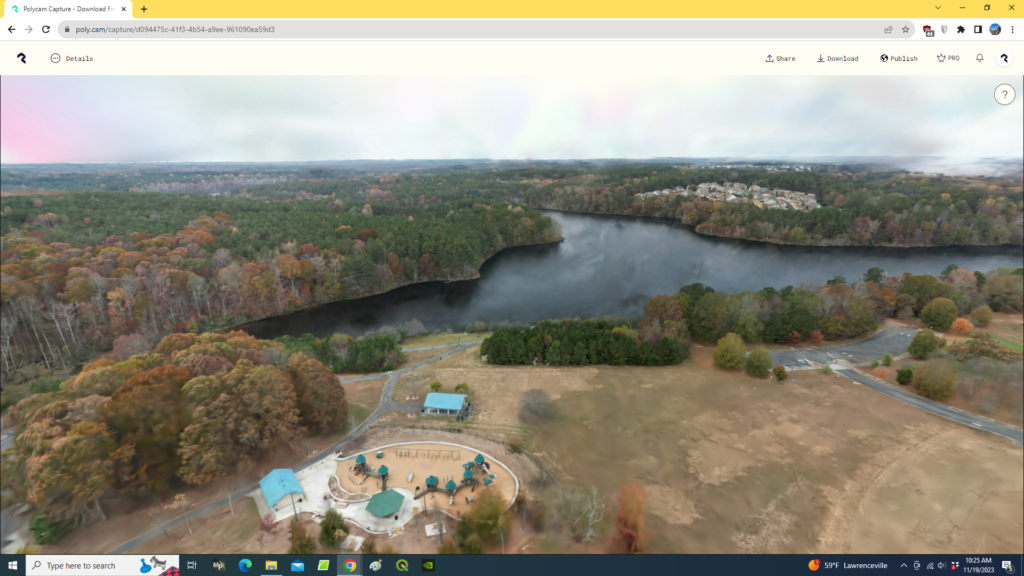
All of these 3D models were processed by Poly Cam in 30 to 45 minutes. By comparison, 3D Mesh models of these image sets processed by Pix4D require 3 to 10 hours to process on a PC utilizing an 11th gen i7 processor and 64 gig of ram.
The gaussian splat method compares favorably with 3D Mesh models created by Pix4D, especially for sky, water and vegetation.
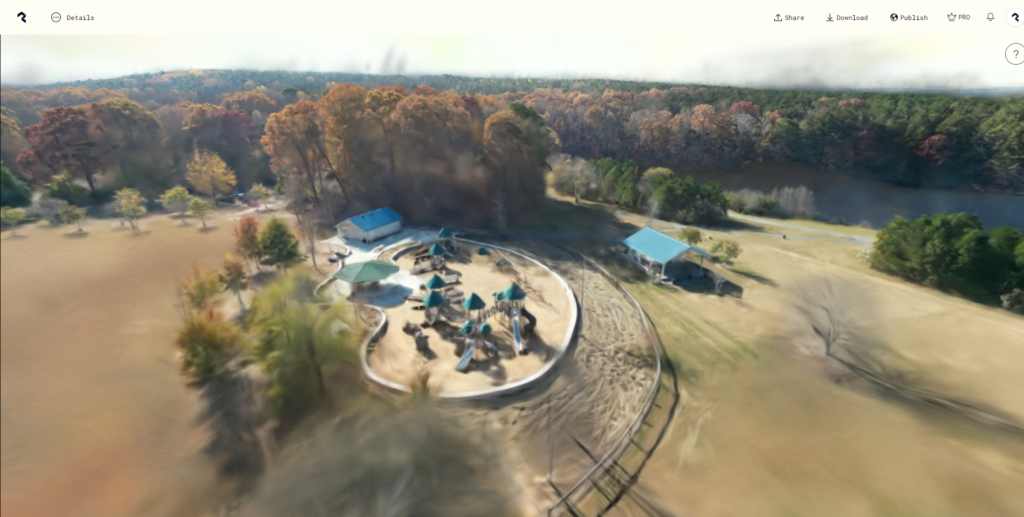
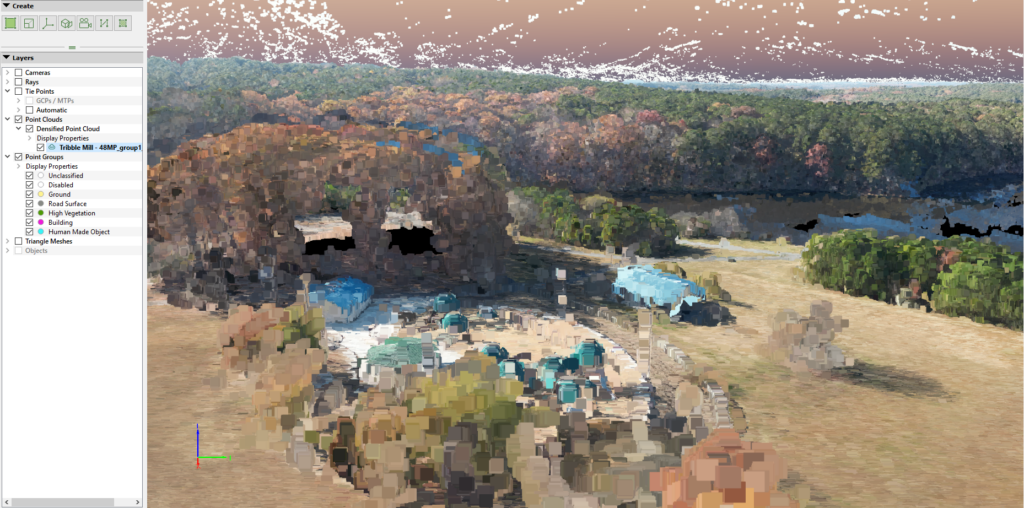
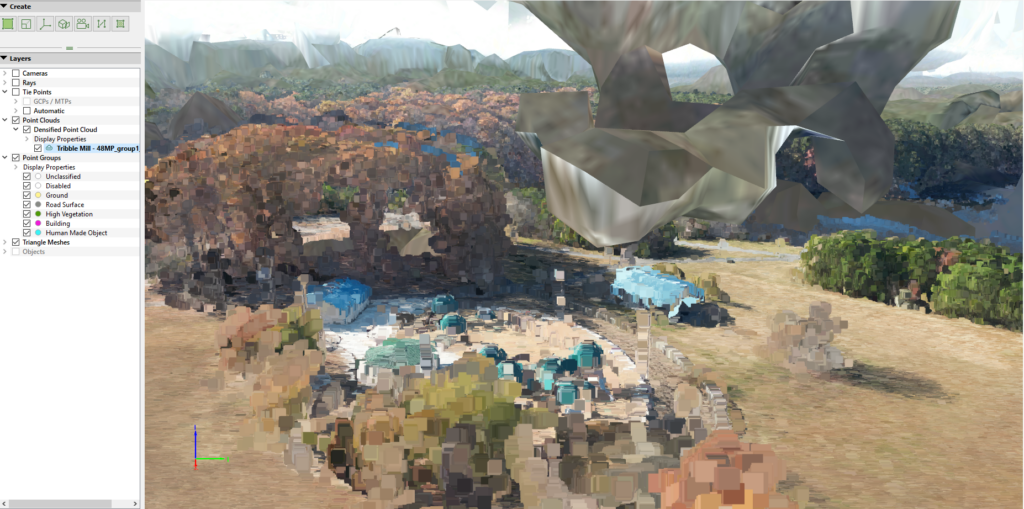
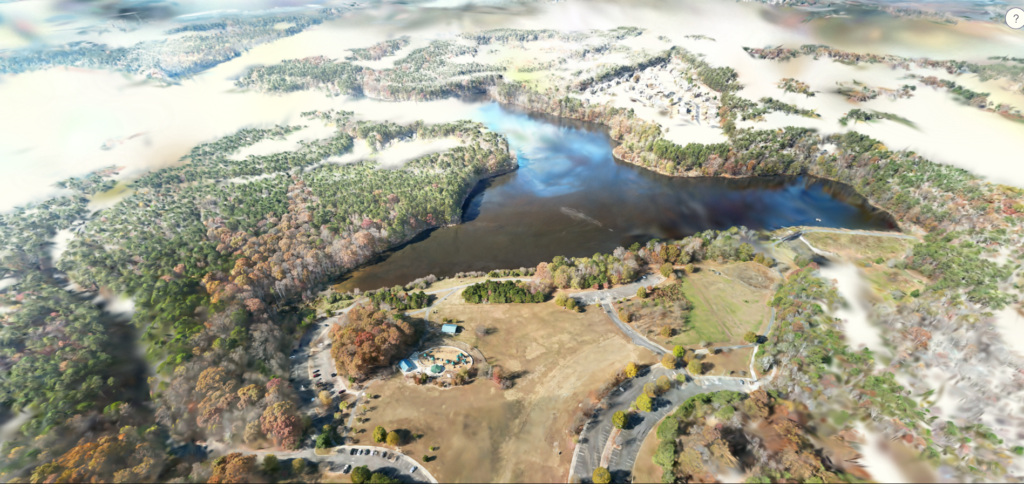
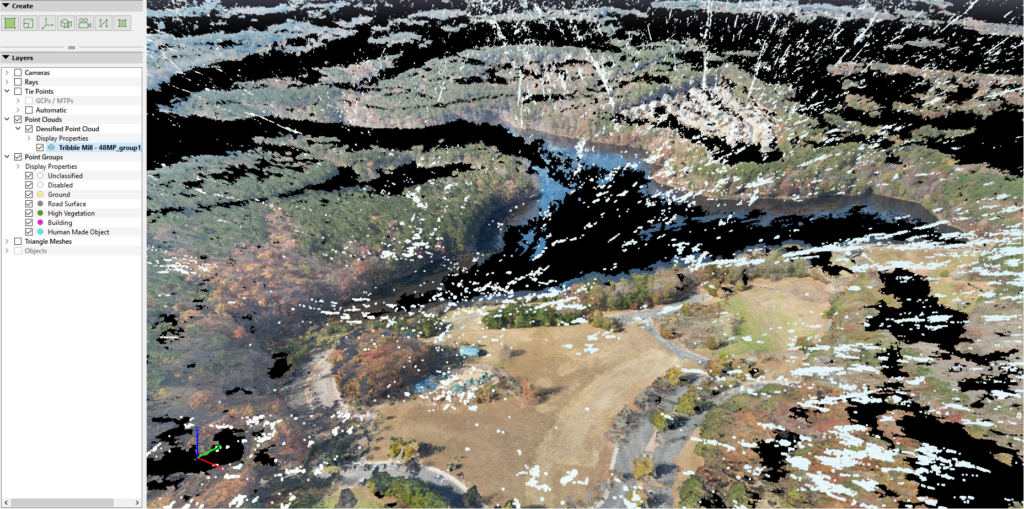

I learned that the Poly Cam Gaussian Splat models do not produce good results with NADIR images. Here’s an example of a Gaussian Splat model using 461 NADIR images.
